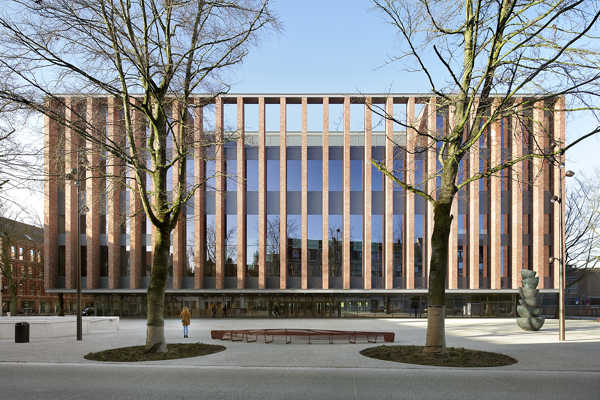Facing bricksVeldbrand Red
Technical data sheets
- Color description
- The colouris red-brown to violet-blue with nuances.
- Manufacturing dimensions (L x W x H)
- ca. 195x92x62 mm (LxWxH)
- Quantity / m² with a traditional joint
- 66 (12 mm)
- Number / m² with a thin joint
- 74 (6 mm)
Veldbrand Red
Red coal-fired field kiln brick
This coal-fired, unsanded moulded brick has the look and character of a traditional field kiln brick. It has a natural nuance with strong accents from the coal fire and lime. Thanks to the current process, it has the same benefits and technical characteristics as a modern facing brick.
case studie Veldbrand Red

Expressive brickwork exudes the craft of ‘brick making’
Not ‘just another brick in the wall’
The site of this remarkable house was originally an undeveloped building plot for a detached property on an old green parcel of land from the 1960s. However, the clients didn’t like the stereotypical conformist concept of a detached house on a neatly mowed lawn.

BMCC, an urban renewal project that plays all the trump cards of the historic city centre
Veldbrand forms the perfect synthesis of facing bricks in the neighbourhood so that the new meeting and convention centre fits in effortlessly with its surroundings
Bruges city centre is another rich attraction. The Beursplein (Exhibition Hall Square) now lives up to its name because since 31 March, it has boasted the brand new Bruges Meeting and Convention Centre (BMCC) where an impersonal car park used to mar the view. Designed by Souto de Moura Architects and META Architectuurbureau, this gem connects the neighbourhood in every respect while also attracting lots of tourists to the heritage city at the same time.
Continue reading
References
How to Install ?
Preparation of the construction site
- Always order the full amount of bricks required for a specific site. In this way, the entire order can be made during one production run.
- Try to have the full order supplied at one time. If this creates several deliveries, always mix a number of packs from the previous delivery with a number of packs from the new delivery. This procedure is especially recommended in case of re-order or for an additional order.
- Take bricks diagonally across the pack.
- Draw and use bricks from at least five different packs.
- For setting out, use bricks from the delivery made to the site in question. Do not exclusively use the theoretical dimensions of the brick, or samples previously supplied, or different production run from that intended for the site.
- As soon as the bricks arrive on site, check delivery tickets and certificates against the specification and order. Also check that there are no visible inconsistencies with the order.
- Do not lay bricks in freezing weather or protect the ‘fresh’ masonry with insulating mats in order to avoid frost damage to the mortar.
- In the case of prolonged dry hot weather, lightly dampen the newly laid brickwork to stop the mortar drying and curing too quickly.
- Do not lay bricks in precipitation in order to prevent mortar from running on the wall.
Avoid Efflorescence
- During and after laying, protect the newly built brickwork for a height of at least 60 cm - but ensure there is airspace between the brick face and the waterproof covering.
- Provisionally install rainwater down pipes to avoid saturation of the newly laid brickwork
- Never lay bricks in driving rain conditions





















